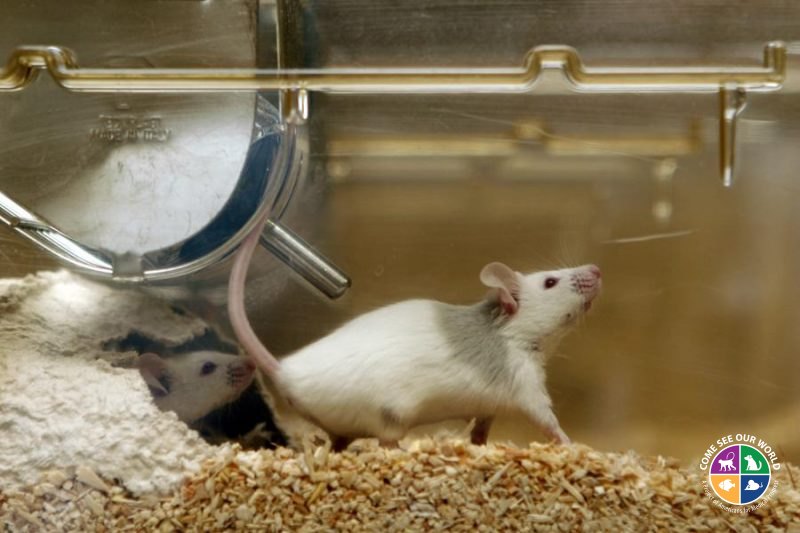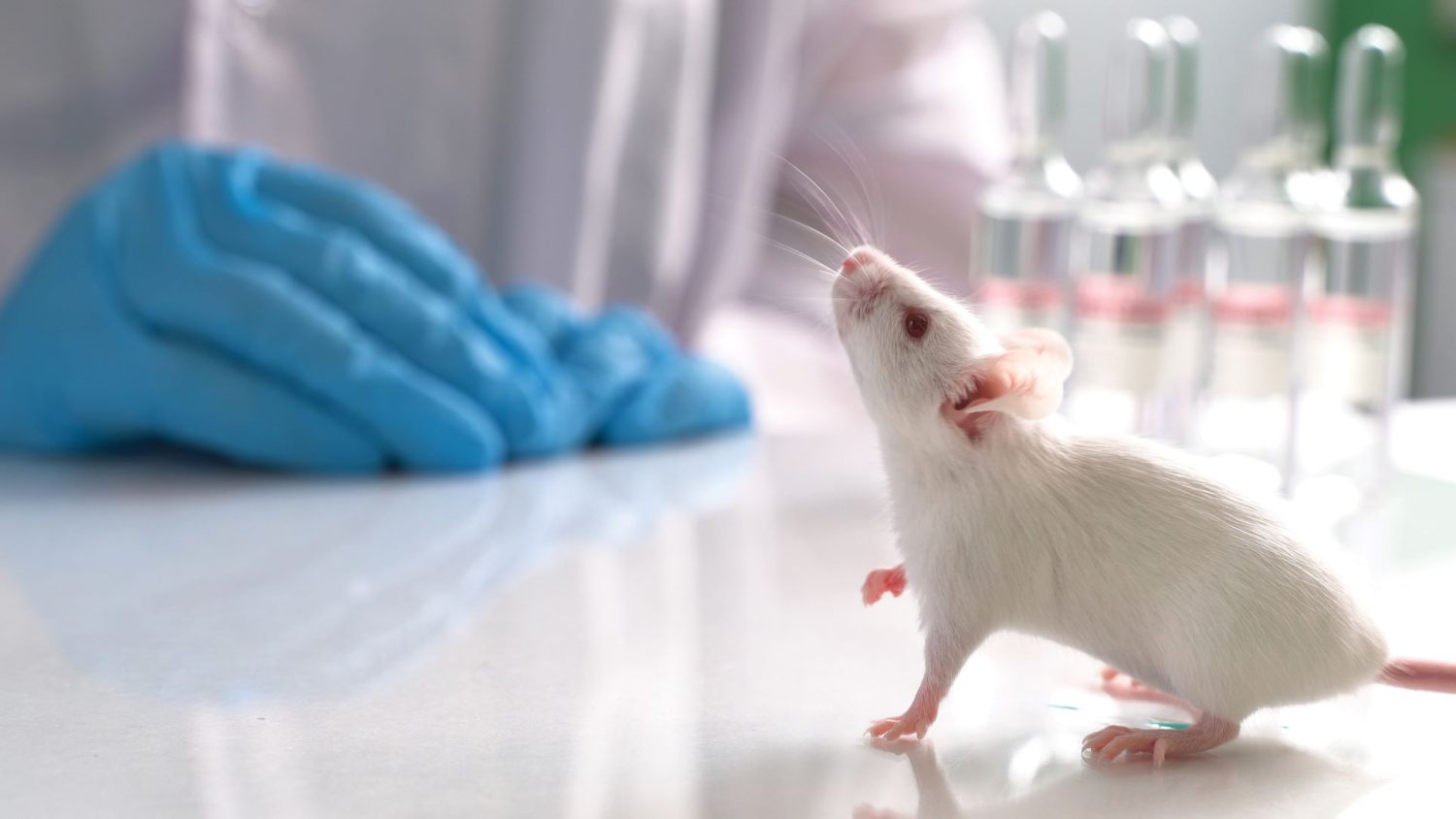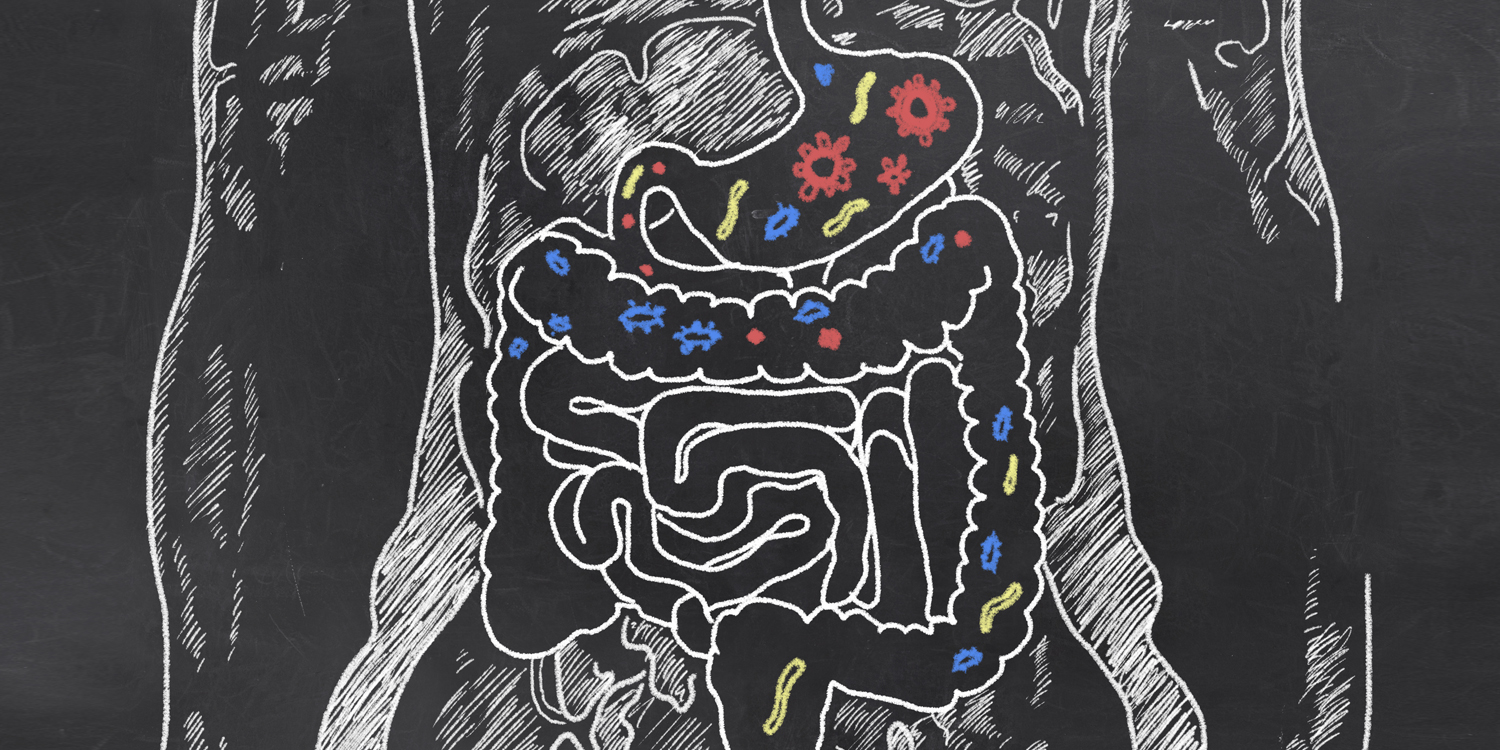The gut microbiome (GM) contains trillions of microorganisms (mainly bacteria) that live in the intestinal tract, involved in critical functions to health and well-being. But further insight is still necessary to fully capture how the gut microbiome impacts health.5 Studying the gut microbiome of mice is vital for unraveling the truth about gut health.
Hence, making studies on the GM of rodents increasingly valuable. But, as more research continues, researchers are discovering how sensitive the GM is. For example, the slightest variation in husbandry practices could alter the GM drastically.
So, what variables are particularly crucial for GM studies of rodent models?
Husbandry Practices Can be a Variable in Studying the Gut Microbiome of Mice
Because the GM is extremely sensitive and complex, different husbandry practices can influence it immensely.3 Caging, bedding, and diet can significantly impact the GM of mice.3

Caging Type Can Influence the Gut Microbiome of Mice: Static Versus Individually Ventilated Caging
Researchers found that caging type impacted the gut microbiome of immunodeficient mice. They found that “immunodeficient mice in either ventilated racks or open-top caging had subtle changes to their fecal microbiota.”3 However, the fecal samples of wild-type mice were not affected by caging type.3
Although the fecal samples of wild mice did not indicate any influence from cage type, the study found “unexpected, stark differences in the cecal microbiota of wild-type mice subjected to different housing conditions.”3 But, the cage type was not the only variable in this discovery. The bedding type had an influence.3
Bedding Type Matters
The differences in the cecal microbiota “were dependent on the interaction of two variables, cage ventilation, and bedding.”3 Researchers suggest that a possible explanation for the influence of bedding on the microbiome is the “presence of an unknown aromatic or volatile compound in aspen bedding that is removed from ventilated micro-isolator cages but remains in static cages.”4

Additionally, studies suggest “biologically relevant differences, with hardwood and corncob bedding containing significantly greater levels of LPS relative to paper bedding.”3 Plus, corncob, hardwood, and paper bedding contain different coliform counts.3 These differences may explain variations of results of mice housed with additional bedding, but further research is needed.3
Housing Density Influences the Gut Microbiome of Mice
Most of the research about housing density aims to understand the relationship housing density has on rodent models’ psychological well-being and health.1 For example, “Numerous studies have investigated the impact of housing density, cage change frequency, caging system, ventilation, and other husbandry-related variables from the standpoint of animal well-being, but very few have explored the influence of these variables on the GM composition.”3
But as studies of the GM are increasingly in demand, more research is necessary to understand the effect housing density has on the gut microbiome.1 According to a recent study, housing density is a critical variable in gut microbiome studies.1 Studies show that reducing housing density to two mice per cage increased the ability to detect treatment effects in the microbiome.
The Use of Antimicrobials Can Alter the GM of Mice
Another influence on the gut microbiome of mice is antibiotics.4 Often, animals used in research receive medical care, including antibiotics “for brief periods to treat conditions such as dermatitis, fight wounds, and suspected bacterial pathogens of unknown etiology.”4

Studies examining the effects of antibiotics on the gut microbiome of mice show that antibiotics “can have profound and long-lasting effects on the gut microbiome, and potentially, the model phenotype.”4 Overall, the influence of antibiotics on the phenotype of rodent models depends on many factors “including duration of exposure, formulation, acidification of the rodent drinking water, and even host genetics.”4
The Impact of Diet on the Composition of Murine Gut Microbiome
So many factors can influence the gut microbiota that it’s almost no surprise that diet can impact it. For Example, some studies demonstrate “the importance of diet as a detriment of gut microbiome composition.”5 However, more research is necessary to fully understand the impacts of diet on the murine gut microbiome.5
To learn more about the impact of diet on rodent models, see our webinar Minimizing Dosing Stress During the Pre- and Post-Operative Period. Or, read our blog 3 Amazing Benefits of Low-Stress Dosing for Post-Op Rodents.
References
- Russell, Amber, et al. “Reduced Housing Density Improves Statistical Power of Murine Gut Microbiota Studies.” Cell Reports, vol. 39, no. 6, 2022, p. 110783., https://doi.org/10.1016/j.celrep.2022.110783.
- Shreiner, Andrew B., et al. “The Gut Microbiome in Health and in Disease.” Current Opinion in Gastroenterology, vol. 31, no. 1, 2015, pp. 69–75., https://doi.org/10.1097/mog.0000000000000139.
- Ericsson, Aaron C., et al. “The Influence of Caging, Bedding, and Diet on the Composition of the Microbiota in Different Regions of the Mouse Gut.” Scientific Reports, vol. 8, no. 1, 2018, https://doi.org/10.1038/s41598-018-21986-7.
- Korte, Scott W., et al. “Acute and Long-Term Effects of Antibiotics Commonly Used in Laboratory Animal Medicine on the Fecal Microbiota.” Veterinary Research, vol. 51, no. 1, 2020, https://doi.org/10.1186/s13567-020-00839-0.
- Mullin, Gerard E. “Article Commentary: High-Fat Diet Determines the Composition of the Murine Gut Microbiome Independently of Obesity.” Nutrition in Clinical Practice, vol. 25, no. 3, 2010, pp. 310–311., https://doi.org/10.1177/0884533610368714.

